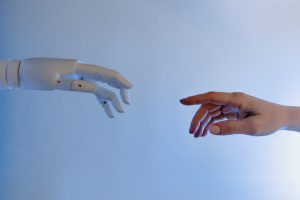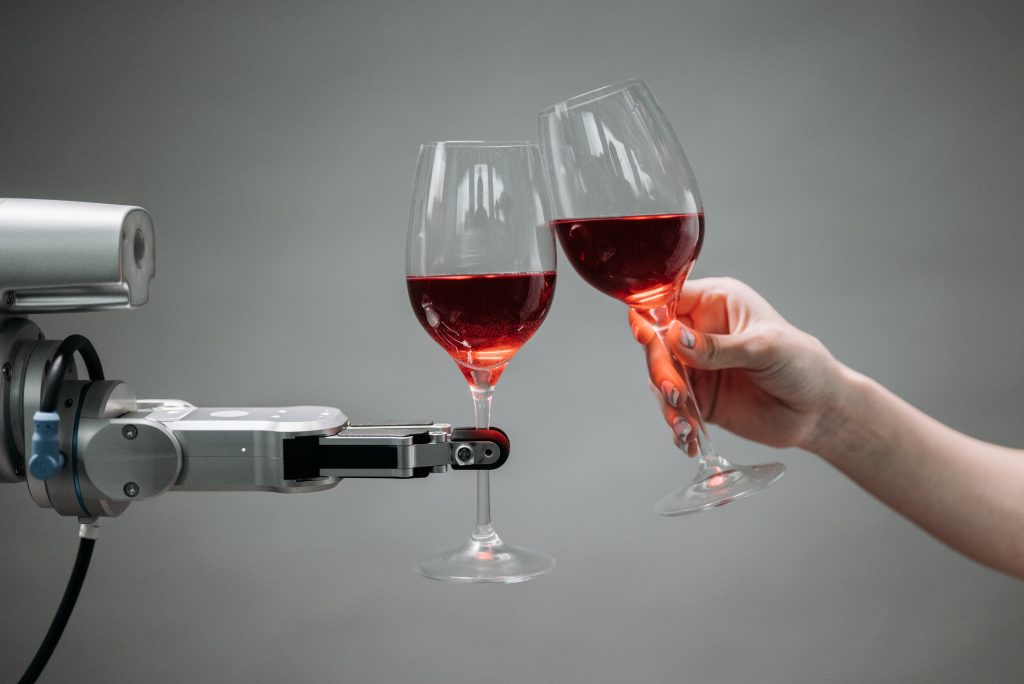How to integrate AI in a brand’s communication, going beyond the customer service experience and how can impact your profit? – Let’s deep in
Artificial Intelligence (AI) is no longer a futuristic concept, but a reality that has already transformed the way we live and work. From virtual assistants like Siri and Alexa to self-driving cars and predictive analytics tools, AI has already made our lives easier and more efficient.
It’s no secret that AI is already transforming the way we do business. While we’re all familiar with the bullet-pointed actions that AI can take in terms of tactic tasks, it’s the integration of AI technology that really has the potential to change the game, if the marketers are clever and curious enough to jump on the train.
The point of view is already settled: with generative and predictive AI, businesses can use data to inform their strategies and decision-making processes. This not only helps executives avoid biases in their decisions, but also enables them to automate processes and make strategic choices based on data insights, cross-data analysis and projecting future patterns. All these sounds good, right? But, how does it actually work?

Down to business: how companies are using artificial intelligence (from years now)
The application of AI extends well beyond responding to online inquiries, and several industries in the private sector are utilising this technology in numerous lucrative, profitable ways. And yes, we can check this improvement in different industries and areas, and far beyond the data processing.
For example, in the customer experience area, for the past decade Alphabet Inc.’s Google has been using large language models to enhance its search engine capabilities, particularly by anticipating user queries’ intentions and improving consumer engagement with ads. The company is now increasing its investment in AI to create privacy tools and assist advertisers in serving more customised and captivating ads. These efforts have already yielded positive results, with a 20% increase in conversions for advertisers compared to the previous year’s quarter.
Another one is Alibaba, the Chinese company that also is the world’s largest e-commerce platform (surpasses the sales of Amazon and eBay combined). The company relies heavily on artificial intelligence on its daily operations to predict customers’ potential purchases. With language processing, Alibaba generates product descriptions automatically for its website.
Robert Half International Inc, a human resources consulting firm with a database of over 30 million candidates, plans to maintain AI spending at similar levels to 2022, according to Chief Financial Officer Michael Buckley AI has revolutionised the process of candidate identification and selection, and the company is now exploring how AI can assist in identifying leads for its sales professionals.
In terms of services, the options are countless. According to CEO Charlie Scharf, the bank Wells Fargo & Co. plans to introduce an AI-powered virtual assistant called “Fargo” to personalise and simplify customers’ banking experiences. In 2021, CME Group Inc. partnered with Google Cloud for a decade to use its data analytics and machine learning solutions to provide clients with information and toolkits for developing models, algorithms, and risk management.
The elephant in the room: can AI really replace human strategists and steal our jobs?
The short answer is no, but there are plenty of aspects of strategists’ work where AI and advanced analytics tools can bring enormous value. As everything, it relies on the way of thinking, how creative you can be and taking this as the opportunity to work smarter.
AI has the potential to transform a wide range of industries, from healthcare and finance to manufacturing and retail. As we explained with the examples above, the role of AI in a brand’s strategy can vary depending on the specific goals and objectives of the brand, but there must be a human component to match all the information and point it to the right way.
Also, and this could be one of stones of the dynamic, AI works based on data, and sometimes real-time data, but if the data is outdated, biassed or wrong-orientated, it could affect the AI functions, so the human hand and eyes need to stay close, and use the AI as another (but brilliant) colleague.

AI from the inside of Samy Alliance
We don’t talk just from online data and ideas, but by our personal and professional experience. We have on our AI powered tools that we use in our day to day to study consumer behaviour, thus resulting in process improvements, precision actions and, therefore, allowing our human talent to make smarter and specific decisions when planning and developing either a marketing strategy, digital campaign, selecting an influencer or any of our complementary advertising services.
Tools like Shinebuzz, used by our company SamyRoad to gather and analyse influencer profiles allows our marketing team to choose the right person for the right campaign. On the other hand, the Synthesio system and the R-tools used by Capture Intelligence run and process Social Listening exercises so we can study from brand reputation to online conversations and users sentiment around any brand or topic, and this can be used by the Creative and Strategy team in campaigns planning.
In the end, from thinking that AI works for “data processing” we can easily go to optimising logistics and inventory management, gathering and labelling conversations, identifying profiles, predicting decisions based on previous patterns… And this leads to reducing costs and improving delivery times, increasing users satisfaction, deducting possible hit products, designing outstanding social media strategies, anticipating restock, making more informed and secure investment decisions, or even opening new businesses.
These are all the reasons why, according to Forbes, AI is expected to have a significant impact on the economy by 2035, increasing business productivity by over 40%. The report also predicts that AI will drive economic growth by an average of 1.7% across 16 industries by 2035, with information and communication, manufacturing, and financial services being the top 3 industries expected to gain the most economic growth, being followed by education, accommodation, construction and food services, at least in terms of profitability.
Here’s the real deal we need to talk about: AI is not just about saving money, it’s also about creating new growth opportunities. AI can help companies identify new market trends and consumer patterns, leading to the development of new products and services, sales and profits, but yes, it definitely does need a creative human brain to go from data to business.

